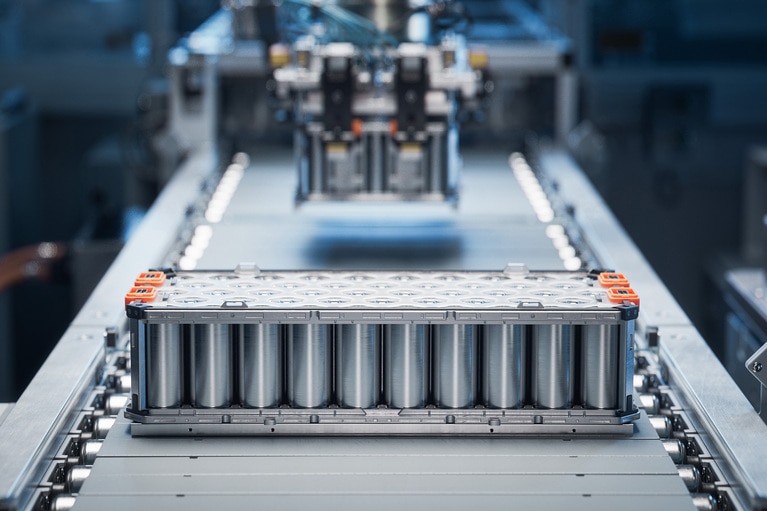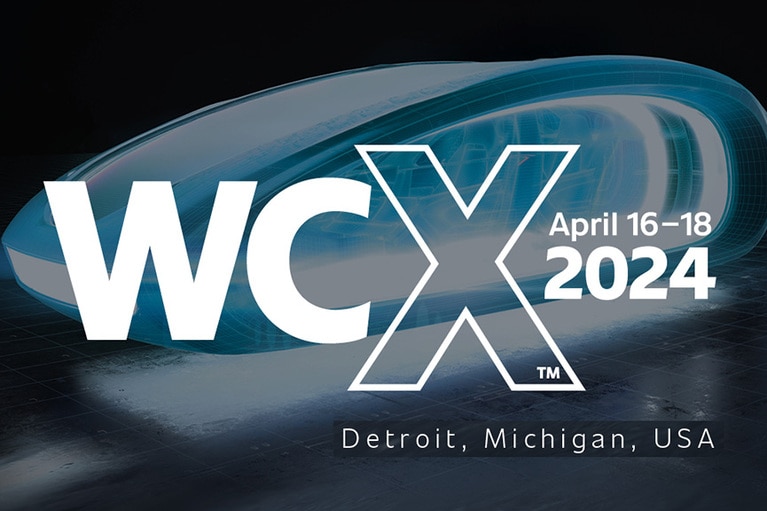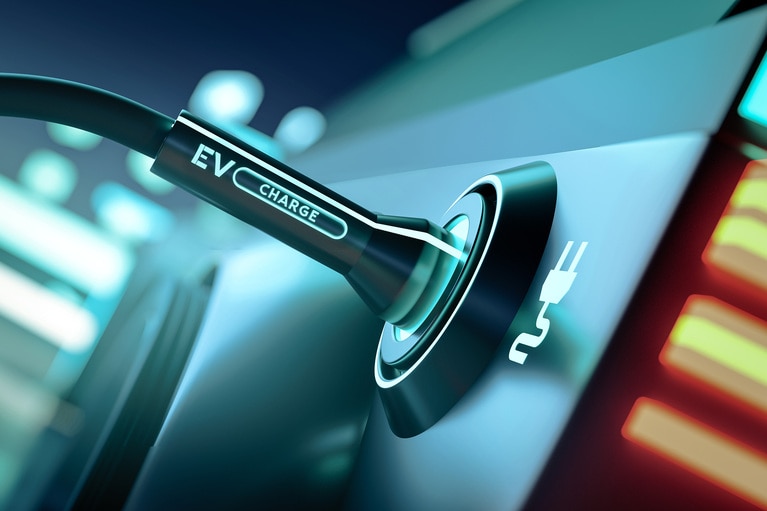
The future of long-haul trucking is accelerating autonomously on a freeway near you
Kodiak autonomous technology revolutionizes long-haul trucking. Learn more about Vicor power modules that drive mission critical ‘seeing’ sensors
High-performance power modules drive mission critical ‘seeing’ sensors. Vicor power modules support their 12, 24, and 48V power supply buses.
By Bill Schmitz, President Vicor Power Systems
Figure 1: Kodiak Robotics integrates autonomous technology into commercial fleets using power modules.
Commercial trucking is the backbone of the U.S. economy. That has never been more evident than in the past few years as Covid-19 supply chain disruptions gripped the country.
At the same time, it’s becoming harder and harder to find people who want to drive trucks. The average American truck driver is about 48 years old and for long haul truckers, the average age is even higher, which may help explain why there was a shortage of 80,000 drivers in the U.S. last year, according to the American Trucking Association.
Autonomous commercial trucking has advantages over long haul passenger vehicles given that highway driving is a less complicated problem to solve compared to the many nuances of negotiating secondary roads and city streets.
Additionally, from an economic standpoint, the trucking industry can better absorb the R&D costs of vehicle autonomy. The base price of an 18-wheeler is about $150,000, compared to $30,000 to $60,000 for a passenger vehicle, so the percentage of the vehicle cost taken up by autonomous systems is proportionately smaller. And the cost of an autonomous driving system is more easily amortized in a truck that operates for between one million and two million miles.
Figure 2: Kodiak Robotics long-haul trucking autonomous technology, the Kodiak Driver, includes a modular hardware system, known as SensorPods™, that integrate the majority of sensors needed to “see” its environment using the truck’s traditional mirror-mount points.
Against that backdrop Kodiak Robotics was launched in 2018 with a focus of developing autonomous technology for the long-haul environment that can be integrated into carriers’ fleets. Kodiak’s autonomous solution, the Kodiak Driver, includes a modular hardware system, known as SensorPods™, that integrate the majority of sensors needed to “see” its environment using the truck’s traditional mirror-mount points. The pods’ modular design allows them to be swapped on and off within minutes, which maximizes fleet uptime without the need for specially-trained technicians to install the devices and recalibrate the sensor network.
Kodiak’s progress has been swift. Since launching its operations hub just south of Dallas, Texas, in 2019, Kodiak has been focusing on safely developing a system that can handle the demanding long-haul environment. This year alone Kodiak has completed multiple pilots with some of the biggest names in freight, including four uninterrupted round trips from Dallas to Atlanta with the Kodiak Driver continuously operating. Since August 2022, Kodiak has piloted autonomous freight deliveries in Texas for home goods retailer IKEA, operating seven days a week between a distribution center in Baytown and the IKEA Store in Frisco.
“The Kodiak team represents some of the most experienced people in the autonomous vehicle industry,” said Don Burnette, the company’s Founder and CEO. “This has allowed us to take the most direct path to success, versus the trial-and-error approach that was common when the industry was starting.”

Figure 3: Kodiak uses a unique Sparse Mapping approach, which contains just enough information about the highway to make autonomy possible. The maps are complemented by Kodiak Vision, a comprehensive sensor fusion system as well as lidar and radar if the truck drives into direct sunlight that saturates the camera.
Among the technologies that set Kodiak apart is the company’s unique Sparse Mapping approach. Kodiak’s Sparse Maps contain just enough information about the highway to make autonomy possible, while still allowing trucks to quickly respond to their changing environment. The maps are complemented by Kodiak Vision, a comprehensive sensor fusion system. Rather than relying on a single sensor modality, Kodiak Vision adapts to its environment, for example, leaning on lidar and radar if the truck drives into direct sunlight that saturates the camera.
Kodiak quickly identified three areas in an AV trucking environment where the power system design needs to be uncompromising: reliability, efficiency and the ability to perform in-system health monitoring.
These requirements are what drew Kodiak to partner with Vicor Corporation’s custom design division, Vicor Power Systems (VPS), a wholly owned subsidiary of Vicor. This division designs high-density, high-performance power systems utilizing Vicor’s power modules, that are ideal for autonomous vehicle systems. The Kodiak power system utilizes several Vicor power modules to support their sensor needs that require 12, 24, and 48V power supply buses. These include the Vicor NBM6123, BCM6123, PRMs™ and VTMs™. All of the power modules are part of Vicor’s SM ChiP™ (converter housed in package) line and deliver reliable, highly efficient power conversion in very small packages.
Efficiency is another key metric. In autonomous trucking systems, thermal efficiency is critical, which Vicor addresses through its power modules’ planar packaging. The less heat the power system generates, the less Kodiak has to exhaust outside the cab.

Figure 4: Kodiak currently uses several Vicor power modules to support their sensor needs that require 12, 24, and 48V power supply buses. These include the Vicor BCM6123 and PRM and VTMs.
Vicor also provided design support to enable controllable outputs to every component in the system, optimizing component health by monitoring the voltage and current on all Kodiak sensors. The Kodiak Vision platform includes four basic buses that must be directed to specific sensors, actuators and processors. Each output is monitored and individually controlled through a proprietary CAN bus.
“If you look at the power supply, at least a third of it is controls – FETs, microprocessors and interfaces. That was a significant portion of the design,” said Bill Schmitz, president of Vicor subsidiary VPS. “It came down to understanding which modules are best for distributed power rail and then how to control every single output.”
Vicor additionally provides battery charging for a 48-volt system when the truck is garagedand plugged in. The AC shore power system maintains the battery charge level when the engine is not running, allowing maintenance technicians and engineers to use the vehicle indoors. By using a Vicor 48-volt system on the truck Kodiak is able toreduce the size of the cabling, saving weight, space and enabling the vehicle for high-power applications.
“Picking the right kind of power conversion is important when maximizing efficiency and reliability,” said Schmitz. “Over time, Vicor was able to resolve the power conversion down to the most efficient, highest-reliability method.
Typically, commercial transportation doesn’t make headlines until something goes wrong. Its importance is underappreciated, yet it is indispensable to global economic stability. Today, Kodiak stands ready to revolutionize this industry with autonomous transportation that will enable more reliable and efficient trucking.
It will be a paradigm shift for an industry that until recently flew under the radar with little fanfare. Just as important, it will enable safer work conditions and better quality of life for truckers, helping alleviate today’s problematic driver shortage. Kodiak has a made a lofty vision a reality. What was once just a fantastic science fiction notion, may be exiting an off-ramp in your city very soon.
This article was originally published by Power Systems Design.
Since 1995, Bill Schmitz has been President of Vicor Power Systems. He works closely with customers, overseeing the design, testing, and manufacture of custom power designs. Prior to this, Bill worked as a sustaining engineering/design engineer designing custom discrete power supplies. Bill holds a BSEE from Gonzaga University and in his spare time he enjoys woodworking, automotive interests and outdoor activities in the Pacific Northwest.
Bill Schmitz, President Vicor Power Systems
The future of long-haul trucking is accelerating autonomously on a freeway near you
Kodiak autonomous technology revolutionizes long-haul trucking. Learn more about Vicor power modules that drive mission critical ‘seeing’ sensors
High-performance power modules drive the battery lifecycle
Learn about the lifecycle of a battery and how high-performance, power dense modules are being used to reduce cost, size and improve efficiency
World Congress Experience WCX 2024(米国・デトロイト)
Vicor は、World Congress Experience 2024 (WCX™) で 5 つの講演を実施し、800V/48V 電力変換の革新的なアプローチを紹介。
Compact power modules are driving electrification
Power modules address complex electrification challenges and offer creative latitude to solve today’s toughest power challenges





